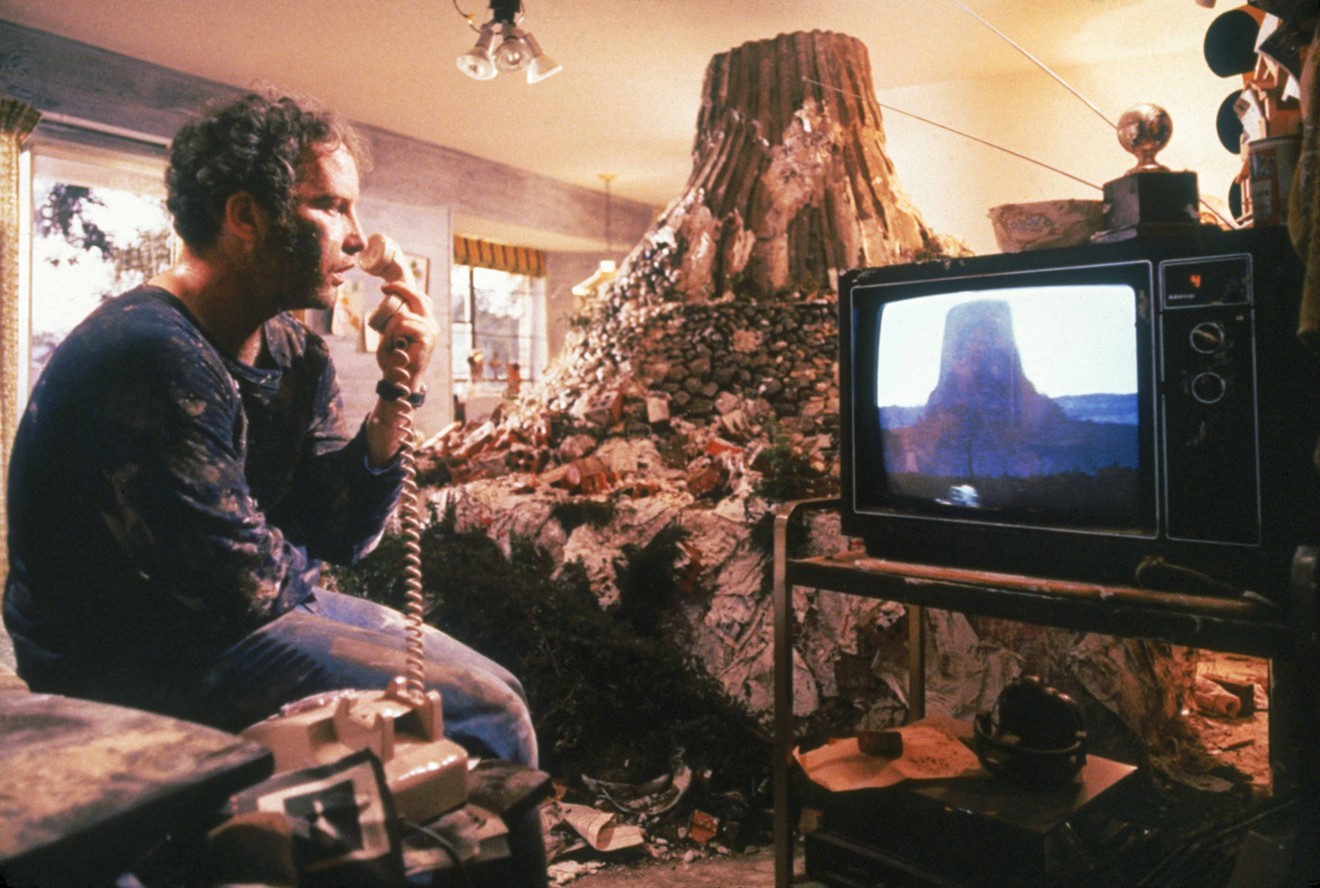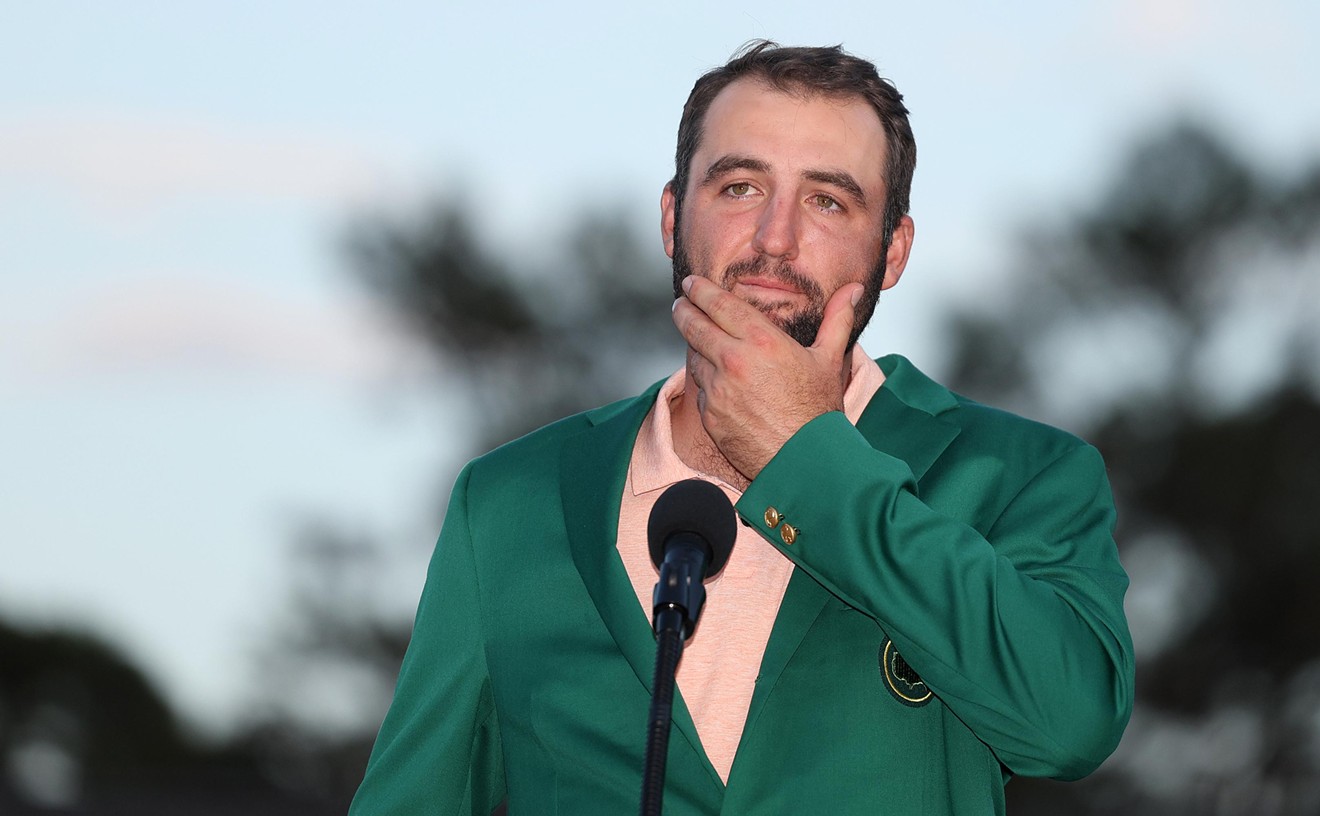In one sense, Steven Spielberg’s 1977 UFO bliss-out, Close Encounters of the Third Kind, is reprehensible. It is, after all, the story of a daydreamer dad (Richard Dreyfuss) who leaves his family for worlds unknown as he continually trades in one slender, luminous life companion for another: Teri Garr for Melinda Dillon for the glowing sprites disgorged from the grandest spaceship in cinema history. In another sense, that narrative proves deeply revealing of the film’s creator and its era. The leave-it-all-behind ethos of Close Encounters extends beyond the go-nowhere clutter and clamor of the downwardly mobile suburban life of Dreyfuss’ Roy Neary. Here was Spielberg the wunderkind, at the tail end of the decade of personal Hollywood filmmaking, dramatizing the desire to vault from American malaise and right into fantasy. He wished upon a star, and the movies followed. But don’t let the dreck that arrived in Close Encounters’ wake blind you to its wonder and honesty.
Spielberg himself has expressed regret about Neary’s trajectory, calling Close Encounters (now enjoying a 40th anniversary re-release) “a young man’s picture” and insisting he could never make it that way today. The Spielberg he grew up to be — the responsible dad and global citizen — knows better than to depict as heroic the abandonment of paternal responsibility. Not that he could get away with it. Today, the rules for crowd-pleasing filmmaking have been codified. In a Close Encounters reboot, producers would insist that Dreyfuss’ Neary have some less mystic motivation to hunt down the aliens who have been beaming the silhouette of Devil’s Tower into his head. Rather than leaving his kids behind, he’d be rescuing them from the UFO. Or he’d have lost his family before the story even started, like Tom Cruise’s character in Spielberg’s Minority Report — as a Cruise hero dashes through an adventure, have you ever believed that he would prefer domestic tranquility?
Either approach would prove more palatable than what Spielberg the Younger went with, but also less truthful. Part of the fantasy in most adventure stories is a liberation from a family unit; adventure stories often disguise this by centering their quests on the restoration of that family unit. Close Encounters doesn’t bother. It could have been titled Dad’s Wild Weekend: In its worst moment, our hero smooches the single mother played by Dillon, less than an hour of screen time after Garr and the kids have packed into the station wagon and screeched out of the movie. Rather than work to win back the family that his mania chases away, Neary destroys their home in the name of his obsession, erecting a mountain in his living room.
Spielberg, too, was building the fantastic where it didn’t belong: a New Hollywood invested in pained realism and principled irresolution. Between Close Encounters’ bravura set pieces — an alien abduction that out-horrors horror films, sojourns to India and the Sonora Desert, visions of clouds gathering with sinister purpose — it offers ’70s scenes of pointedly spiritless living. Neary’s kids make a nerve-fraying racket that he can only escape at work or late at night. Before the UFO sighting that will upend the Nearys’ lives, the kids, touched with a wised-up cynicism, refuse their father’s offer to go see Pinocchio, and the film that follows could be Neary’s vengeful dream of how much fun he’d have without them. (Spielberg cast Francois Truffaut in the film, perhaps as a sort of character witness, the New Wave icon letting cineastes know it’s OK to fantasize.)
The uncanny intrudes into the best of the family scenes. The most famous, justly, concerns Neary’s impromptu sculpting of a pile of mashed potatoes at a family dinner; as the father stares at his food, searching for something ineffable, his wife and children stare, too, in raw and uneasy silence, until the oldest son bursts into tears. But often Spielberg himself seems uneasy in the mode of family drama, not sure whether the scenario of dad losing his job and building Devil’s Tower in his bathrobe is comedy or tragedy. But the noisy, sometimes giddy depiction of a family coming apart strikes me today as at least true to Neary’s perspective. It’s intensely painful to lose his family, yet nothing excites him more.
Most exciting for us are Close Encounters’ close encounters. Rarely has Spielberg so marvelously united his gifts for horror and wonder. Late at night, toys come to life in a rambling Indiana farmhouse; meanwhile, Neary, on patrol for the electric company, gets blasted with light from the heavens and seems to levitate in his truck, a scene of disorienting awesomeness. (Douglas Trumbull supervised the visual effects and Vilmos Zsigmond served as cinematographer.) Later, lights will flit across the skies like high-tech fireflies, and eager rubes will gather on a hillside to watch for more. Spielberg always understood what audiences want.
My favorite scene arrives early. An air traffic controller speaks to a pilot who is witnessing a strange light in the sky. We see no strange lights ourselves, just blips on a console and the faces of the controller and his coworkers crowding into the frame. Spielberg shot in a real controller center, and cast real controllers, who playact the scenario with a dry professionalism, the director’s wonder/horror never more grounded in convincing ordinariness — and never more inviting to our imaginations. Here we collaborate in the scene, imagining what’s happening right along with the controllers. Our sense of the situation comes from a slight strain in the lead controller’s voice, from an increase in crosstalk, from the way his colleagues gradually assemble around him. One gapes over as he glides slowly back in a roller chair, the shot a witty inverse of Spielberg’s signature, the push-in on an awed face.
The film’s extended finale finds Spielberg and company doing the imagining for us, spectacularly and sweetly — it posits that the aliens have come to Earth to jam on some prog. It’s arranged according to the logic of Broadway showstoppers rather than science fiction. Radiant heralds dance before the arrival of the star, that glittering mothership, who blats out oboe solos in counterpoint to the synthesizer mathematics of an Earth scientist. Then comes the curtain call: Out skitter the silvery aliens, distinguished by the oversized black eyes and hairless, balloon-bulbous heads that would come to dominate real-life accounts of “close encounters.” This last reel, all peaceful pageantry, remains singular among blockbusters. Nobody dies, and nothing gets blown up.
Except the Neary family, of course. Our hero gets selected by the aliens to leave this Earth for no reason that anyone can explain — our world may not be working out for Dreyfuss’ dreamer, but the heavens themselves have come to show us he’s special. His every-dude dissatisfaction is given cosmic significance. (Why can’t Terri Garr’s character escape her miserable life?) But at least the film, before it bathes us in brilliant light and John Williams’ interpolation of “When You Wish Upon a Star,” has labored to show us the cost of this most selfish of fantasies. Spielberg would go on to study boys and men struggling to become complete selves after being left behind by their own fathers: E.T.’s Elliott, Indiana Jones, Leonardo DiCaprio’s Catch Me if You Can con man. We could call them Roy’s Boys, the children of Neary.
[
{
"name": "Air - MediumRectangle - Inline Content - Mobile Display Size",
"component": "18855504",
"insertPoint": "2",
"requiredCountToDisplay": "2"
},{
"name": "Editor Picks",
"component": "17105533",
"insertPoint": "4",
"requiredCountToDisplay": "1"
},{
"name": "Inline Links",
"component": "18349797",
"insertPoint": "8th",
"startingPoint": 8,
"requiredCountToDisplay": "7",
"maxInsertions": 25
},{
"name": "Air - MediumRectangle - Combo - Inline Content",
"component": "17105532",
"insertPoint": "8th",
"startingPoint": 8,
"requiredCountToDisplay": "7",
"maxInsertions": 25
},{
"name": "Inline Links",
"component": "18349797",
"insertPoint": "8th",
"startingPoint": 12,
"requiredCountToDisplay": "11",
"maxInsertions": 25
},{
"name": "Air - Leaderboard Tower - Combo - Inline Content",
"component": "17105535",
"insertPoint": "8th",
"startingPoint": 12,
"requiredCountToDisplay": "11",
"maxInsertions": 25
}
]












